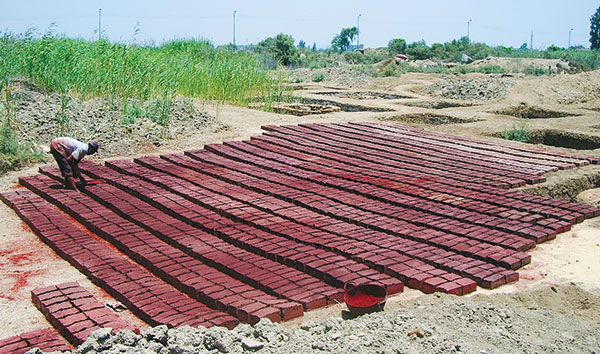Image Details

Courtesy Robert Littman and Marta Lorenzon
DAILY QUOTA. Israelite slaves were required to meet a daily quota of mudbricks. Two New Kingdom Egyptian sources—a leather scroll from the fifth year of Ramesses II’s reign and Papyrus Anastasi III from the third year of Merneptah’s reign, both from the 13th century—refer to brick making. According to the former, the daily quota was 2,000 mudbricks. Coincidentally, the work crew at Tell Timai produced nearly this amount after two days of making mudbricks. To achieve a standardized shape, the mud mixture was poured into wooden molds, deposited on a drying floor and left there for a week. Ochre was added to the new mudbricks, giving them a bright red hue so as to distinguish these bricks from the originals in the ancient walls they sought to conserve.
